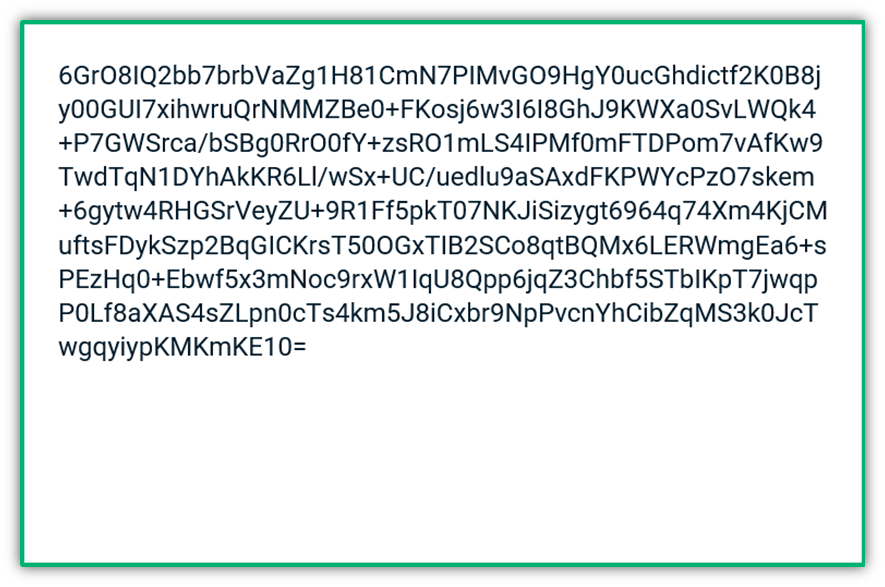In the realm of digital communication, encryption acts as a veritable fortress, standing resolute against prying eyes and ensuring the privacy of correspondence. However, like a seasoned cryptanalyst equipped with the right tools, one might find pathways through this cryptographic labyrinth. The art and science of reading encrypted messages demand an understanding of both techniques and underlying principles. Herein lies a compact guide, infused with intriguing metaphors and insights that illuminate the multifaceted nature of cryptanalysis.
A cipher, in its essence, metamorphoses plain text—messages that anyone can understand—into a tapestry of obscured symbols. It’s akin to weaving intricate patterns in a fabric that hide the very essence of what it conveys. The process of decrypting this fabric requires an analytical mind, equipped not only with knowledge of algorithms and key management but also an appreciation for the epistemology of secrecy.
Understanding the Basics of Encryption
Encryption is often described in two primary forms: symmetric and asymmetric. Symmetric encryption relies on a single key that both encodes and decodes the information, resembling a solitary lock and key; both actions, locking and unlocking, hinge upon the same mechanism. Conversely, asymmetric encryption employs a pair of keys—public and private—reminiscent of a set of intricate gears wherein one key might open a lock but cannot itself secure it. Understanding these fundamental constructs is crucial when embarking on the journey into cryptanalysis.
The Cryptanalyst’s Toolkit
Armed with knowledge, the cryptanalyst’s toolbox is replete with sophisticated methodologies and software designed to facilitate the decryption process. These tools can range from fundamental frequency analysis to advanced computational algorithms. Frequency analysis, for instance, capitalizes on the empirical observation that certain letters and combinations appear with predictable regularity within a given language. This technique is akin to a botanist identifying species by discerning characteristic leaf patterns in a dense forest.
Furthermore, notable software tools such as GnuPG and Aircrack-ng can be employed to automate complex patterns and expedite the decryption process. Just as a botanist might utilize advanced imaging technology to analyze plant life in minute detail, a cryptanalyst can rely on computational prowess to discern hidden messages lurking beneath layers of encryption.
The Art of Pattern Recognition
Much like an artist studies the strokes of a masterwork, a cryptanalyst must hone their skill in discerning patterns. Those well-versed in literary theory might employ various stylistic analyses to interpret encrypted messages. Consider that language itself holds a myriad of characteristics—syntax, semantics, and phonetics all contribute to the voice in which a message is conveyed. In any initiated attempt to unravel encryption, the ability to recognize these nuanced elements becomes critical.
Patterns reveal themselves in the frequency of characters, distributions, and even repetitious sequences. By dissecting the encrypted message, the cryptanalyst might unearth familiar motifs that signal the presence of common encoding practices. This ability to recognize and extrapolate information is akin to an archeologist uncovering the lost relics of a forgotten civilization, piecing together history one fragment at a time.
Employing Classical Techniques
In addition to modern technological advancements, classical cryptanalytic techniques remain invaluable. The Caesar cipher, for example, employs a simple shift in letter positions. By methodically adjusting the alphabet, one can construct a clear narrative from what appears to be muddled chaos. Just as a linguist might decode ancient manuscripts through steadfast dedication, a cryptanalyst can deploy similar perseverance in tackling more complex ciphers.
Another classical technique worth noting is the Vigenère cipher, which shifts letters based on a repeating keyword. Herein lies a deeper layer of complexity, necessitating an understanding of the keyword’s positioning and its relationship to the plaintext message. The challenge is reminiscent of navigating a labyrinthine hedge maze—each choice bearing the potential for discovery or misdirection.
Tackling Modern Encryption
Modern encryption, fortified by advanced algorithms such as AES and RSA, may seem insurmountable to those unacquainted with contemporary cryptanalysis. However, it is vital to remember that even these formidable barriers are not impermeable. With appropriate resources and insights, the cryptanalyst can engage in deconstruction, employing methods such as brute force attacks or side-channel attacks to identify vulnerabilities, much like an engineer examining structural weaknesses in a building’s design.
Such methodologies encourage the cryptanalyst to think creatively—utilizing the failure of a protocol or implementing timing attacks can unveil the keys necessary for decryption. It is a cerebral chess match, every move calculated, every possibility assessed, leading towards eventual triumph.
Ethics and Responsibility in Cryptanalysis
However, it is crucial to underscore the ethical dimensions intrinsic to cryptanalysis. The power to decode messages harbors a grave responsibility. Respect for privacy must govern every analytical endeavor, akin to the respect afforded to sacred texts. Cryptanalysis should aim to foster trust and security rather than undermine it. In a world increasingly reliant on digital communications, the role of the cryptanalyst is to serve as both a guardian and a steward of confidentiality.
Conclusion: A Decoding Symphony
In summary, the pursuit of decrypting encrypted messages weaves together the intricate threads of science, art, and ethics. The journey is a symphony—a concert of intellectual rigor, creative exploration, and moral responsibility. With an unyielding commitment to deciphering cryptographic puzzles, the cryptanalyst not only unveils obscured messages but also fortifies the very foundations of trust in our digital world.








Leave a Comment